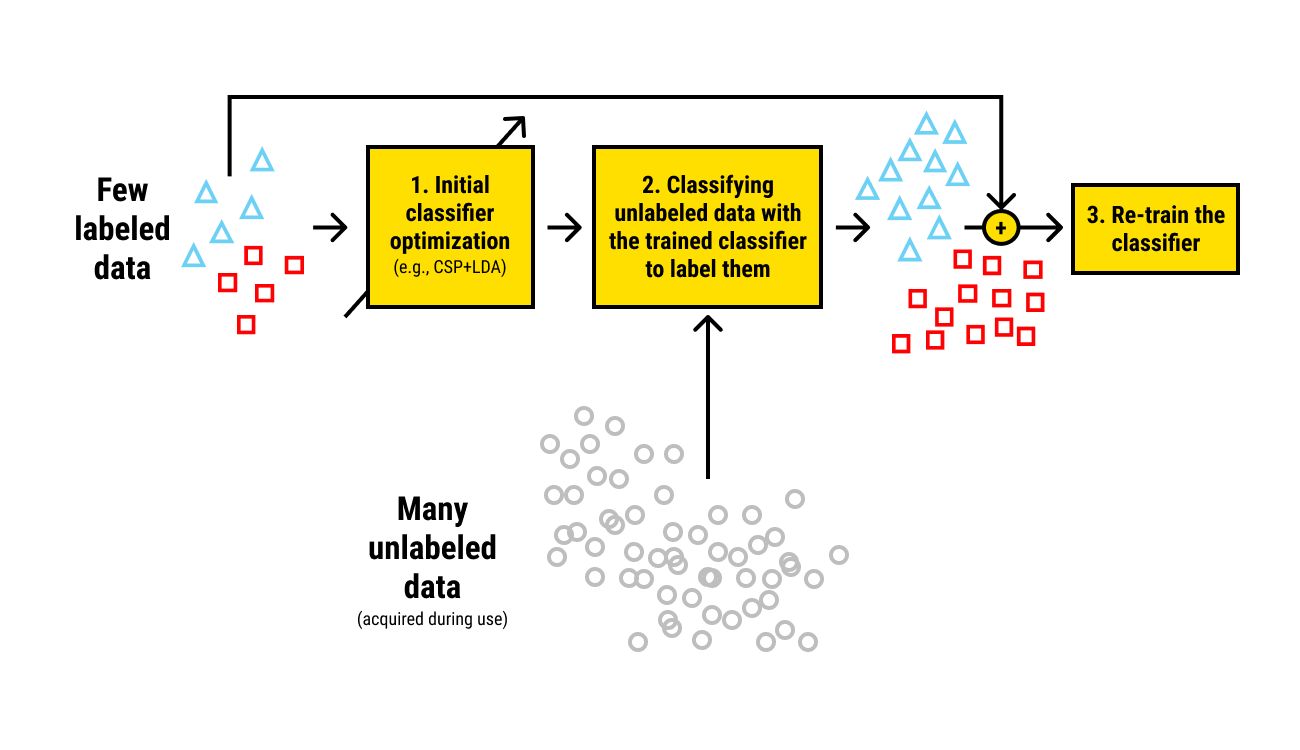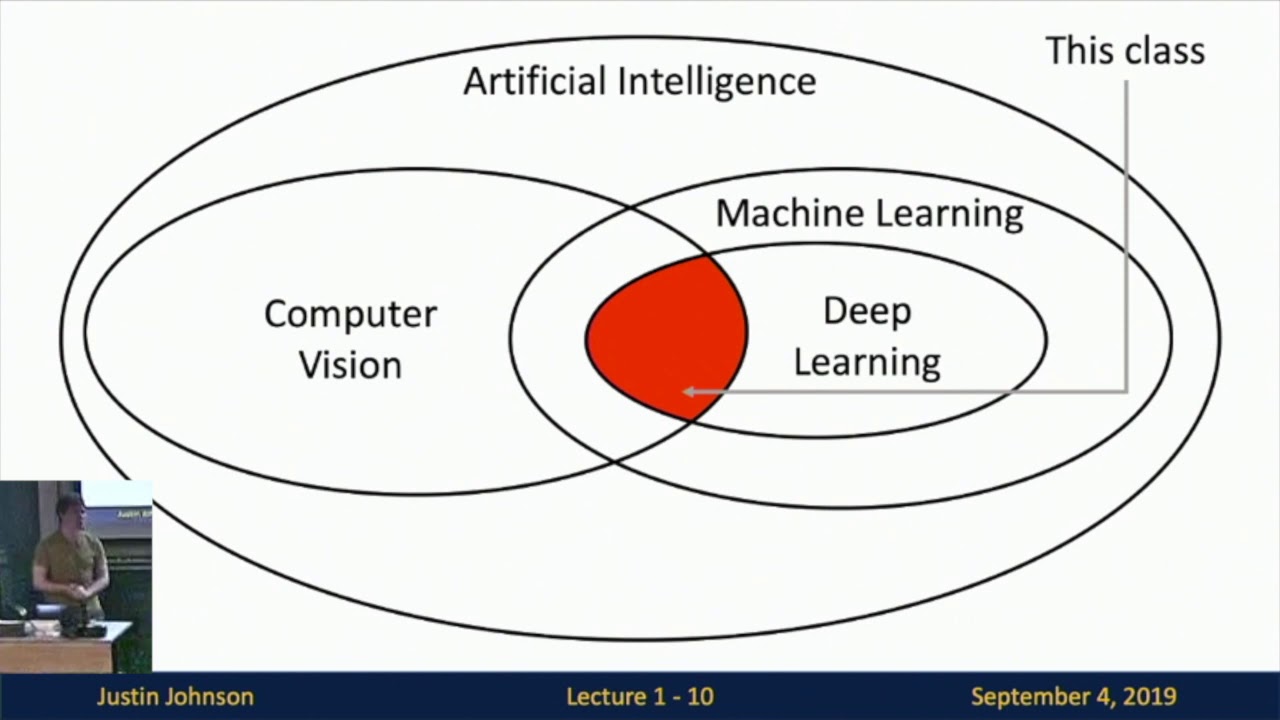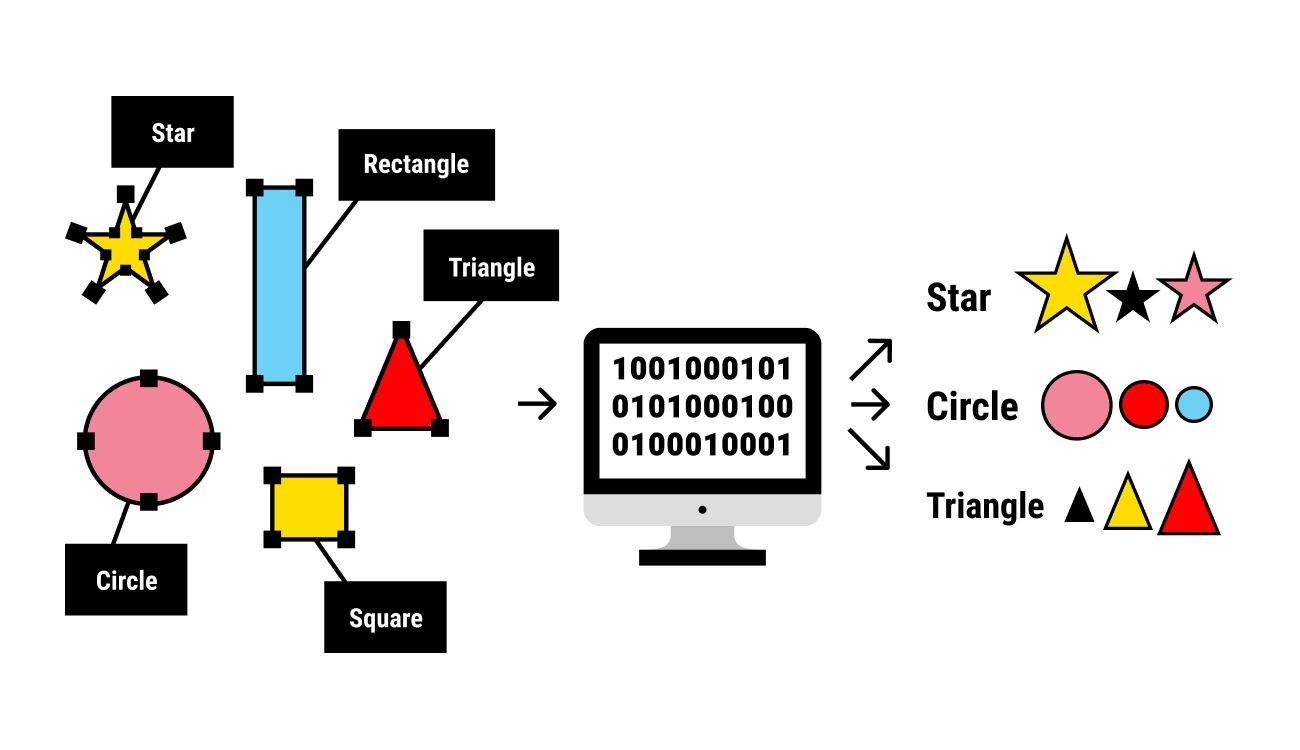Introduction
Welcome to the intriguing world of Machine Learning (ML)! In this ever-evolving field, one crucial concept that plays a vital role in the accuracy and reliability of ML models is the ground truth. Ground truth refers to the objective and verified data that serves as the ultimate benchmark for training and evaluating these models.
As ML algorithms aim to learn from existing data patterns and make predictions or classifications, having a reliable ground truth becomes pivotal. It acts as the reference point against which the performance of the models is measured. Without ground truth, ML models would lack a solid foundation, making it challenging to achieve accurate results.
In this article, we will delve into the concept of ground truth, its importance in ML, the challenges involved in determining it, the methods used to establish ground truth, and its applications in ML models. We will also explore how ground truth is used for evaluation and validation purposes and discuss the limitations and considerations surrounding its implementation.
By the end of this article, you will have a comprehensive understanding of the significance of ground truth in ML and its role in building reliable and effective models. Let’s begin our exploration!
Definition of Ground Truth
Before we dive deeper into the concept, it is essential to establish a clear definition of ground truth. In the context of machine learning, ground truth refers to the accurate and verifiable information or data that serves as the benchmark or reference for training and evaluating ML models.
The ground truth can be thought of as the “true” or correct answers that ML models aim to achieve. It represents the objective reality against which the performance of the models is measured. This ground truth data is typically manually labeled or verified by domain experts, ensuring its accuracy and reliability.
In various ML applications, the ground truth may encompass different types of data, depending on the specific task at hand. For example, in image classification, the ground truth may consist of properly labeled images with their corresponding categories or classes. In natural language processing, the ground truth may involve human-annotated text data, such as sentiment analysis or named entity recognition.
It is important to note that the concept of ground truth extends beyond just the training phase of ML models. While it is crucial for initial training and parameter tuning, ground truth is also essential for the ongoing evaluation and validation of the models. It serves as a benchmark against which the model’s performance is assessed and refined.
Overall, ground truth can be seen as the foundation of reliable and accurate ML models. It provides the reference points and standards for assessing and improving model performance, enabling the models to make informed predictions or classifications based on real-world data.
Importance of Ground Truth in Machine Learning
The role of ground truth in machine learning cannot be overstated. It is a fundamental component that contributes to the accuracy, reliability, and effectiveness of ML models. Let’s explore the importance of ground truth in more detail.
1. Training and Model Development: Ground truth serves as the benchmark for training ML models. It provides the correct answers or labels that the models aim to learn and replicate. By training models with reliable ground truth data, we ensure that they can accurately capture the patterns and relationships present in the data, resulting in more robust and accurate predictions.
2. Performance Evaluation and Validation: Ground truth is crucial for evaluating and validating the performance of ML models. By comparing the predicted outputs of the models against the ground truth, we can measure the model’s accuracy, precision, recall, and other performance metrics. This evaluation process helps us understand the strengths and weaknesses of the models, allowing us to fine-tune and improve their performance.
3. Bias and Fairness Assessment: Ground truth is instrumental in identifying and addressing bias in ML models. By analyzing the ground truth data, we can assess if the models exhibit bias or discrimination towards certain groups. By recognizing and mitigating bias, we can ensure that ML models provide fair and equitable results across different demographic groups.
4. Real-World Application: Ground truth has direct implications for real-world applications of ML. For example, in healthcare, ground truth data can be used to train models for disease diagnosis or prognosis. In self-driving cars, ground truth data plays a crucial role in training models to recognize and respond to real-world objects and road conditions. Accurate ground truth is essential for building ML models that can reliably perform important tasks and make informed decisions in various domains.
5. Continual Model Improvement: Ground truth allows for the continual improvement of ML models. By regularly updating and refining the ground truth data, we can feed these improvements back into the models during retraining and fine-tuning. This iterative process helps models adapt to changing data patterns, improve performance, and stay up to date with evolving trends.
In summary, ground truth is of paramount importance in machine learning. It forms the foundation for training, evaluating, and improving ML models, ensuring their accuracy, reliability, and applicability in real-world scenarios. By leveraging high-quality ground truth data, we can harness the full potential of machine learning and drive advancements in various industries and fields.
Challenges in Determining Ground Truth
Determining ground truth in machine learning can be a complex and challenging task. Several factors contribute to the difficulties involved in establishing reliable ground truth data. Let’s explore some of the key challenges in more detail.
1. Subjectivity: Many real-world phenomena and concepts can be subjective, making it challenging to establish a universally agreed-upon ground truth. For example, in sentiment analysis, determining the sentiment of a text can vary depending on individual interpretations. Overcoming subjectivity and ensuring consistency in labeling is crucial for reliable ground truth generation.
2. Cost and Time Constraints: Manually labeling or verifying data to create ground truth can be time-consuming and expensive, especially when dealing with large datasets. The need for human expertise and involvement can significantly impact the scalability and efficiency of ground truth determination, posing practical challenges in real-world ML applications.
3. Annotated Data Bias: Human annotators may introduce their biases or preconceptions when labeling or verifying data to establish ground truth. These biases can unintentionally impact the accuracy and neutrality of the ground truth, potentially leading to biased ML models. Efforts must be made to minimize annotation bias and ensure diverse perspectives during ground truth generation.
4. Lack of Consensus: In some cases, domain experts may have differing opinions or interpretations of the ground truth, leading to a lack of consensus. This discrepancy can arise due to variations in expertise, different perspectives, or inherent uncertainty in certain data types. Resolving disagreements and achieving consensus on ground truth can be a significant challenge in ML model development.
5. Evolving Ground Truth: Ground truth can evolve over time as new information or perspectives emerge. For example, new scientific discoveries may challenge or update previous ground truth in certain domains. Incorporating these changes and ensuring the continuous accuracy and relevancy of ground truth data pose challenges for long-term model maintenance and updates.
6. Domain-Specific Challenges: Different domains have their unique challenges when it comes to determining ground truth. For instance, in medical diagnosis, reaching a definitive ground truth may require expert consensus or additional medical tests. In image or video analysis, ground truth determination may involve dealing with occlusions, noise, or varying lighting conditions. Understanding the domain-specific challenges is crucial for generating accurate and reliable ground truth.
Addressing these challenges requires a multi-faceted approach, including the involvement of domain experts, careful annotation guidelines, quality control measures, and ongoing updates and refinements to the ground truth data. Overcoming these challenges is essential to ensure the trustworthiness and effectiveness of ML models built upon reliable ground truth.
Methods for Determining Ground Truth
Determining ground truth in machine learning involves employing various methods and techniques to establish accurate and reliable labels or annotations. These methods may vary depending on the specific task and dataset. Let’s explore some commonly used methods for determining ground truth in more detail.
1. Manual Annotation: Manual annotation involves human experts manually labeling or verifying the data to establish ground truth. This method often requires specialized knowledge and expertise in the domain. Human annotators carefully review and label the data based on predefined criteria or guidelines. While manual annotation allows for fine-grained control over the ground truth, it can be time-consuming, expensive, and subject to human error or bias.
2. Crowdsourcing: Crowdsourcing involves outsourcing ground truth determination to a large group of people through online platforms. Crowd workers, often referred to as annotators, contribute their time and effort to label or verify the data based on predefined instructions. Crowdsourcing can be cost-effective and efficient for large-scale ground truth generation. However, proper quality control mechanisms, such as consensus labeling and worker qualification, are necessary to ensure the accuracy and reliability of the crowd-sourced ground truth.
3. Expert Consensus: In certain domains, determining ground truth may require the involvement and consensus of domain experts. Experts with specialized knowledge and expertise collaborate to reach a consensus on labeling or verifying the data. This method helps overcome disagreements or uncertainties and ensures the accuracy and reliability of the ground truth. Expert consensus can be particularly valuable when dealing with ambiguous or complex data.
4. Simulation and Synthetic Data: In some cases, ground truth can be generated through simulations or synthetic data. This method involves creating artificial data that mimics the real-world scenarios or phenomena for which ground truth is needed. By synthesizing data with known ground truth labels, ML models can be trained and evaluated. While this approach may not capture the full complexity of real-world data, it can be useful when obtaining ground truth through other means is challenging or impractical.
5. Existing Datasets or Benchmarks: For certain tasks or domains, existing datasets or benchmarks with established ground truth may be available. These datasets are often created and curated by researchers and domain experts. Utilizing these datasets can provide a solid foundation for training and evaluating ML models. However, it’s crucial to ensure that the existing ground truth aligns with the specific requirements and objectives of the task at hand.
6. Active Learning: Active learning techniques leverage human feedback to iteratively improve ground truth determination. ML models are initially trained on a small labeled dataset. The models then identify the instances for which they are uncertain or ambiguous and request human annotation for those specific instances. This iterative process helps build a more accurate and robust ground truth while minimizing the overall annotation effort.
Each method for determining ground truth has its strengths and limitations. The choice of method depends on factors such as the task complexity, available resources, expertise required, and scalability requirements. Combining multiple methods or adapting them to the specific task can further enhance the accuracy and reliability of the ground truth data.
Application of Ground Truth in Machine Learning Models
The application of ground truth in machine learning models is crucial for training, evaluating, and improving their performance. Let’s explore how ground truth is utilized in various stages of the ML pipeline.
1. Training Phase: Ground truth plays a central role in the training phase of ML models. During training, models learn to map input features to the corresponding ground truth labels or outputs. By presenting the models with accurate ground truth data, they can adjust their internal parameters and learn the underlying patterns and relationships in the data. Ground truth acts as the reference for models to develop accurate representations and make predictions or classifications.
2. Model Evaluation and Validation: Ground truth is essential for evaluating and validating the performance of ML models. By comparing the predicted outputs of the models against the ground truth labels, we can measure various performance metrics such as accuracy, precision, recall, and F1-score. Ground truth serves as the benchmark for assessing the models’ effectiveness and helps identify areas of improvement. It enables us to validate the models’ generalization capabilities and ensure that they perform accurately on unseen or real-world data.
3. Error Analysis and Model Improvement: Ground truth provides valuable insights for error analysis and model improvement. By examining the discrepancies between the predicted outputs and the ground truth labels, we can identify specific instances or patterns where the models struggle. This analysis helps diagnose the weaknesses of the models and guides the development of strategies to address those weaknesses. Ground truth acts as a feedback mechanism to iteratively refine and enhance the performance of ML models.
4. Performance Metrics and Thresholds: Ground truth is used to establish performance metrics and determine appropriate thresholds for ML models. By comparing the predicted outputs to the ground truth labels, we can compute metrics such as accuracy, precision, recall, and F1-score. These metrics provide insights into the models’ performance and can inform decisions on setting optimal thresholds or trade-offs between precision and recall, depending on the specific application requirements.
5. Transfer Learning and Pre-training: Ground truth plays a crucial role in transfer learning and pre-training scenarios. Pre-training models on large-scale datasets with reliable ground truth labels allows them to capture general knowledge and patterns that can be transferable to specific tasks. The availability of high-quality ground truth facilitates the transfer of learned representations and knowledge, enabling models to efficiently adapt to new tasks or domains with limited labeled data.
6. Real-World Applications: Ground truth is essential for the successful application of ML models in real-world scenarios. In domains such as healthcare, finance, or autonomous vehicles, accurate ground truth data is crucial for training and deploying ML models that make critical predictions or decisions. The reliability and accuracy of ground truth ensure that the models perform effectively and provide valuable insights or automated actions in real-world applications.
Overall, ground truth serves as the foundation for developing, evaluating, and improving machine learning models. It enables the models to learn from accurate data, make reliable predictions, and generate actionable insights across various domains and applications.
Evaluation and Validation using Ground Truth
Evaluation and validation are vital steps in the machine learning pipeline, and ground truth plays a pivotal role in ensuring the accuracy and reliability of these processes. Let’s explore how ground truth is used for evaluation and validation in machine learning.
Evaluation Metrics: Ground truth provides the reference point for evaluating the performance of machine learning models. By comparing the predicted outputs of the models to the ground truth labels, various evaluation metrics can be computed. Metrics such as accuracy, precision, recall, F1-score, and area under the receiver operating characteristic (ROC) curve help quantify the performance of the models. Ground truth is essential for calculating these metrics and assessing the models’ effectiveness in solving specific tasks or problems.
Validation Testing: Ground truth is used in validation testing to assess how well models generalize to unseen or new data. By holding out a portion of the labeled data as a validation set, models can be evaluated on this set while the ground truth labels are withheld. Comparing the models’ predictions on the validation set with the true ground truth labels helps measure their ability to generalize and make accurate predictions on unseen data. Validation testing provides insights into the models’ performance and helps identify potential issues, such as overfitting or underfitting.
Cross-Validation: Cross-validation is a commonly used technique that uses ground truth to evaluate models’ performances on multiple subsets of the data. By partitioning the data into multiple folds, models are trained on a combination of folds and evaluated on the remaining fold, with the ground truth labels serving as the evaluation criterion. Cross-validation helps estimate the robustness and generalization capabilities of models across different subsets of the data, providing a more comprehensive assessment of their performance.
Comparative Analysis: Ground truth allows for comparative analysis of different machine learning models or techniques. By evaluating and comparing the performance of different models using the same ground truth labels, we can determine which approach is more effective for a particular task. Comparative analysis helps identify the strengths, weaknesses, and trade-offs of different models, enabling informed decision-making for selecting the most appropriate model for a given problem.
Hypothesis Testing: Ground truth is used in hypothesis testing to assess the statistical significance of the performance differences between models or techniques. By comparing the models’ predicted outputs with the ground truth labels, statistical tests can be conducted to determine if the observed differences in performance are statistically significant. Hypothesis testing provides a quantitative measure of confidence in the models’ performance and helps establish the significance of any improvements or differences observed.
Model Selection and Tuning: Ground truth helps facilitate model selection and parameter tuning. By evaluating models’ performances on the ground truth data, we can select the best-performing model for a specific task. Ground truth also aids in fine-tuning the models’ parameters to optimize their performance. By iteratively adjusting the models’ parameters based on the ground truth evaluation, we can enhance their predictive capabilities and achieve better overall performance.
In summary, ground truth is essential for the evaluation and validation of machine learning models. It provides the baseline for computing evaluation metrics, validating models on unseen data, conducting comparative analysis, testing hypotheses, and facilitating model selection and tuning. Ground truth enables the rigorous assessment of models and ensures their accuracy, reliability, and generalization capabilities in solving real-world problems.
Limitations and Considerations in Ground Truth
While ground truth plays a crucial role in machine learning, it is important to acknowledge its limitations and consider certain factors when utilizing it. Let’s explore some of the limitations and considerations associated with ground truth.
1. Subjectivity and Bias: Ground truth determination can be subjective, influenced by human biases, perspectives, and interpretations. Different annotators may label data differently, resulting in discrepancies and potential bias. It is crucial to establish clear annotation guidelines, provide proper training to annotators, and ensure consensus when multiple annotators are involved to mitigate subjectivity and bias in the ground truth.
2. Inherent Uncertainty: In some cases, ground truth may be inherently uncertain or ambiguous. For tasks that involve complex or subjective judgments, establishing a definitive ground truth can be challenging. Uncertainty should be acknowledged and appropriately addressed, such as through consensus-building or probabilistic modeling, to ensure transparent decision-making and reliable model performance.
3. Cost and Scalability: Manually annotating or verifying data to create ground truth can be time-consuming and expensive, particularly with large datasets. The cost and scalability implications should be considered when determining ground truth, and alternative approaches like crowdsourcing or semi-automated techniques should be explored to address resource limitations.
4. Evolving Nature: Ground truth may evolve over time as new information becomes available or as domain knowledge advances. It is essential to periodically review and update the ground truth to reflect the most up-to-date and accurate information. Failing to account for changes in ground truth could lead to outdated models or incorrect assumptions.
5. Generalizability: Ground truth may be specific to the training data or the context in which it was labeled. Models trained on one dataset with a specific ground truth may not generalize well to other datasets or real-world scenarios. The generalizability of the models should be carefully considered, and efforts should be made to diversify the ground truth data to cover a wide range of possible input variations.
6. Label Noise and Errors: Ground truth itself may not be completely free from errors or noise. Human annotators may inadvertently introduce errors or inconsistencies during the labeling process. It is important to implement quality control measures, such as inter-annotator agreement checks and regular re-evaluation, to minimize label noise and errors and ensure the integrity of the ground truth.
7. Ethical Considerations: Ground truth determination may involve sensitive or personal data, raising ethical concerns regarding privacy and fairness. Proper measures should be in place to handle and protect the privacy of individuals contributing to ground truth data. Additionally, biases and unfairness in the ground truth should be identified and mitigated to prevent the perpetuation of discrimination through ML models.
Considering these limitations and considerations is crucial for using ground truth effectively in machine learning. Transparency, consensus-building, continuous validation, and monitoring of model performance are essential to address these concerns and ensure that ground truth contributes to the development of accurate, fair, and robust ML models.
Conclusion
Ground truth holds significant importance in the field of machine learning. It serves as the objective and verified benchmark for training, evaluating, and improving ML models. By providing accurate and reliable data, ground truth enables models to learn, generalize, and make accurate predictions or classifications in real-world scenarios.
Throughout this article, we have explored various aspects of ground truth, including its definition, importance, challenges in determining it, methods for establishing it, and its applications in machine learning models. Ground truth acts as the foundation for training models, evaluating their performance, and guiding their improvement through error analysis and feedback mechanisms.
However, it is crucial to recognize the limitations and considerations associated with ground truth. Subjectivity, bias, inherent uncertainty, cost, and scalability are factors that should be taken into account when determining ground truth. Maintaining up-to-date and diverse ground truth, addressing label noise and errors, and ensuring ethical considerations are also key in achieving accurate and fair model performance.
In conclusion, ground truth plays a vital role in the success of machine learning models. It forms the basis for accurate predictions, reliable evaluations, and informed decision-making in various domains. As the field of machine learning continues to evolve, it is important to continue refining and optimizing the processes and techniques for determining ground truth, ensuring that it remains a reliable and effective tool in advancing the capabilities of ML models.

























